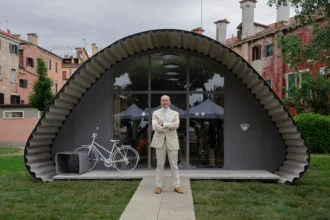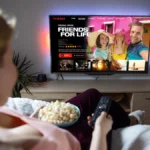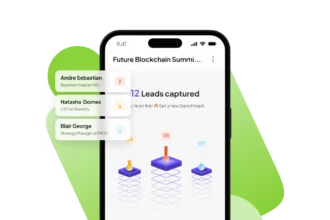In the ever-evolving world of e-commerce, consumers no longer want to just see products — they want to experience them before they buy. The age of flat product images is fading fast, replaced by interactive, 3D-driven experiences that blend immersion, personalization, and realism. Tools like the zakeke product customizer and visualization platforms such as Zolak are leading a new wave of innovation, empowering brands to transform static online catalogs into dynamic, user-driven experiences that rival in-store shopping.
From Static Images to Immersive Experiences
For decades, online shopping relied on two-dimensional photography — a limited perspective that forced customers to rely on imagination. But imagination can be a dangerous ally when buying furniture, apparel, or even gadgets. A color might look different under real light. A sofa might not fit the room. A custom mug might not print the way it appears on screen. These small uncertainties have fueled hesitation and cart abandonment, costing retailers billions every year.
3D product visualization changes that dynamic entirely. By allowing shoppers to rotate, zoom, and explore an item from every angle, brands can recreate the tactile confidence of in-person browsing. When paired with real-time customization, customers don’t just browse — they co-create. This blend of visualization and personalization marks a profound shift in the psychology of online retail: buyers become participants, not just spectators.
Customization as the New Luxury
Today’s shoppers crave individuality. Whether it’s adding initials to a leather wallet or choosing the finish of a gaming chair, customization has become synonymous with luxury and ownership. The challenge for e-commerce platforms is enabling that personalization without sacrificing usability or performance.
This is where platforms like Zakeke have carved out a powerful niche. Its intuitive customization interface allows users to upload images, apply text, or modify materials and colors, all rendered in real-time 3D. Retailers get production-ready print or design files automatically, while customers enjoy instant visual feedback. From personalized jewelry to custom sneakers, Zakeke bridges the gap between creativity and conversion — empowering both buyer and seller.
The magic lies in how seamless it feels. There’s no need for complex design tools or back-and-forth email proofs. A customer tweaks their product, views it in augmented reality, and checks out — confident that what they see is what they’ll receive. In a digital world built on trust, that’s a superpower.
Beyond the Product: Contextual Visualization
While 3D customization focuses on what customers buy, contextual visualization focuses on where and how they’ll use it. That’s the domain of companies like Zolak, a visual commerce platform reshaping how furniture and interior design products are presented online. Instead of a sofa floating on a white background, Zolak enables shoppers to visualize it in a realistic room scene — or even in their own living room using AI and AR.
This contextual layer solves one of the biggest barriers in home-related e-commerce: the imagination gap. Seeing how a piece fits within a space — scale, lighting, color harmony — dramatically boosts buyer confidence. It also unlocks new storytelling opportunities for brands, letting them sell not just items, but lifestyles.
Zolak’s use of AI-driven scene generation and room scanning technology represents the next frontier of visual commerce. By analyzing a customer’s uploaded room photo, it can remove existing furniture, map lighting conditions, and accurately insert new items in seconds. The result is a personalized, cinematic experience that makes digital showrooms feel almost tangible.
The Business Case for 3D Visualization
Investing in 3D product visualization and customization isn’t just about aesthetics — it’s a strategic move with measurable ROI. Retailers adopting 3D configurators often see higher engagement rates, longer time-on-page metrics, and significantly fewer returns. When customers can inspect and personalize a product in full 3D, they form a stronger emotional connection and are less likely to experience “buyer’s remorse.”
Moreover, 3D assets are remarkably versatile. A single digital model can generate dozens of use cases: AR try-ons, marketing visuals, lifestyle renders, and even virtual reality experiences. As metaverse and virtual showroom technologies mature, these same assets will become the foundation for future immersive commerce platforms.
The shift also benefits sustainability. By replacing traditional product photography with 3D rendering, brands can reduce physical samples, studio shoots, and logistics waste — a win for both efficiency and the environment.
The Path Ahead
The integration of 3D visualization and customization tools like Zakeke and Zolak signals a clear direction for e-commerce: from transactional to experiential. The next phase will likely blend these technologies with AI, enabling automated product recommendations, real-time material generation, and hyper-personalized virtual stores that adapt to each visitor.
Imagine a future where your online store doesn’t just display products — it learns your preferences, renders personalized designs instantly, and shows them in a room that looks like your own. That future isn’t decades away. It’s unfolding right now, one render at a time.
Final Thoughts
The rise of 3D product visualization and customization is more than a design trend; it’s a revolution in how we buy, sell, and connect with products. For brands, it’s an opportunity to engage customers through creativity and confidence. For shoppers, it’s a return to what commerce was always meant to be — personal, tactile, and delightfully human.
Platforms like Zakeke and Zolak are not merely tools in this revolution; they are architects of it, reshaping the digital marketplace into a canvas of imagination and interaction. The screens we shop through may be flat, but with 3D visualization, the experience certainly doesn’t have to be.

















